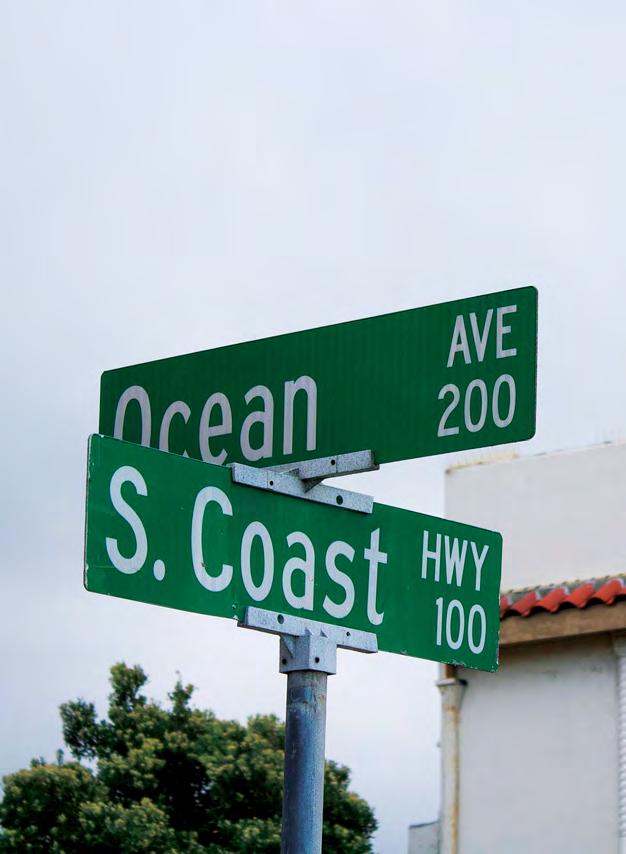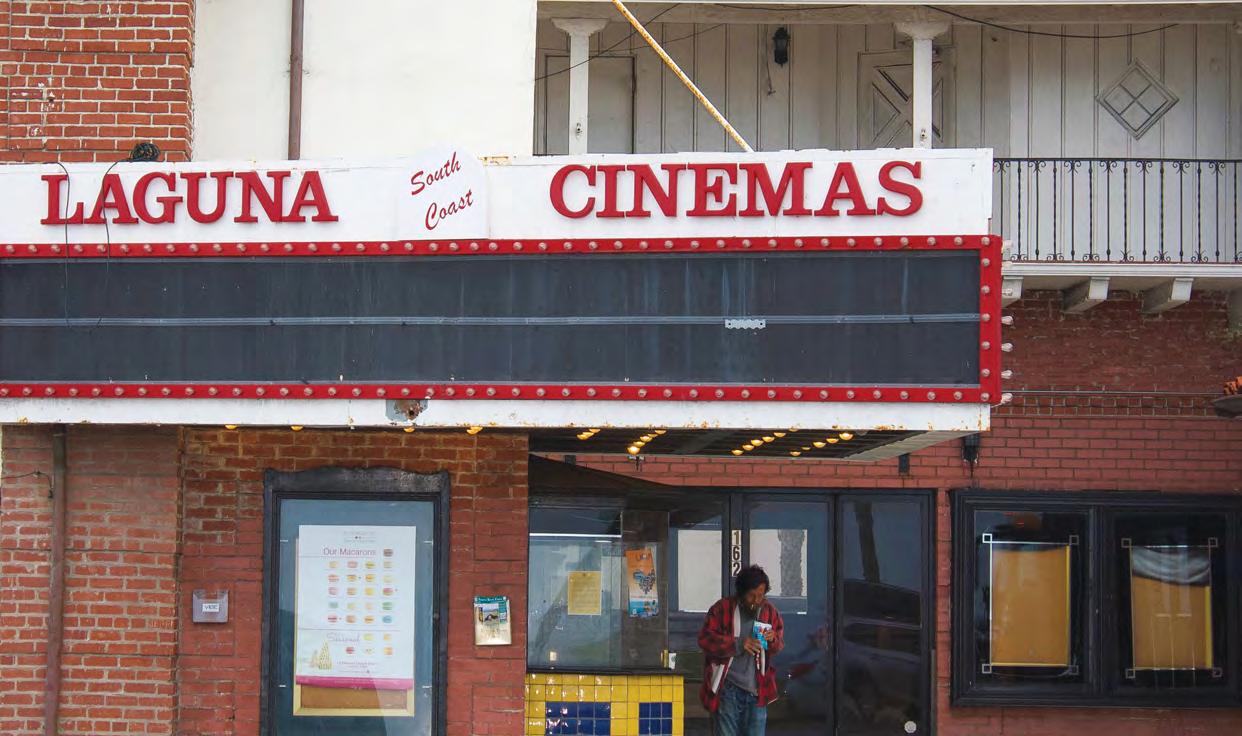
3 minute read
Laguna Beach: A Walk on Ocean Avenue
from Tusk Magazine 2021


Advertisement

a walk on ocean avenue


STORY AND PHOTOS BY DANIELLE JAQUEZ DESIGN BY CANDACE CASTILLO



rowing up, my family had a Sunday morning ritual. Rain or shine, we would wake up at the crack of dawn, and my parents would coax me into the car as I muttered about the ungodly hour and grabbed a stale protein bar.
A short drive down a windy one lane highway landed us in Laguna Beach. The fi rst stop was Zinc Cafe, the neighborhood meeting spot for cliquey locals and their designer dogs. At the counter, I would demand a chocolate chip mu n and get handed a currant scone instead, courtesy of my father’s views on sugar and processed foods.
After paying an absurd amount for their lattes and my disappointing breakfast, we would take a hard right out of Zinc and walk down Laguna’s main street until we hit the ocean.
Emerging from the arts district, we would cross Pacifi c Coast Highway and make our way to the sand. Some days we were lucky and the marine layer would let up just enough to see the sunrise from the water. Along the beach sat a small boardwalk, just big enough for three people across to walk down.
I always walked behind my parents so I could crumble up my scone and drop it for the seagulls. To this day, my mom still holds a grudge against seagulls — she claims they are pushy and rude birds, too loud for their own good.
On the sand next to the boardwalk, homeless folks would spend the night in sleeping bags draped with ratted clothes and seaweed. Most would still be sleeping peacefully as we strolled by with our $7 co ees, but every so often, one would be awake.
I would always make eye contact, fi rst with them, and then my parents, wondering why they didn’t nod and say hello like they did to the other pedestrians we passed by. I learned later in life that the Laguna Beach police department would dispatch a patrol to remove them before the tourists started to trickle in.
The boardwalk ended at steep stairs overlooking the ocean. My method of choice to conquer the stairs was to hang on to my parents’ sleeves and try to get them to pull me up. This never went well.
Eventually, we would make it to Heisler, a long oceanfront park that overlooks Laguna’s coves.
The park is known for its views and art installations, but at the time, I wasn’t interested.
Growing up on the coast of Southern California, I took these privileges for granted and never appreciated the wonders I was exposed to.
There was, however, one thing about these beach trips I always looked forward to. Our fi nal destination was a small set of stairs at the end of Heisler Park that descended into a hidden cove. We would walk up and down the cove’s shores picking up sea glass. I would fi ll my pockets with all di erent shapes and colors, and we would take them home to clean and display in fl ower vases.
As I got older, the sea glass became harder and harder to fi nd. Watching something I loved so much disappear over the years broke my heart. I was convinced that too many people were taking the glass — my glass — and not appreciating it. That’s why it was gone.
A little research told me that sea glass is actually broken down bottles tossed into the ocean. My glass was disappearing along our beaches because Californians were becoming more aware, and they started recycling bottles. While today in Laguna Beach a latte is still $7, at least it is served in a reusable cup. TU SK










